Applesauce is probably the easiest preserved food you can make. It’s worth making for its deliciousness and nutritiousness. But the fact that it’s just so clean and easy makes it even more worthwhile to make.

Jump to:
- Great for Anybody, Excellent for Beginners
- Clean, Seasonal Eating at Its Finest
- How to Make Homemade Applesauce
- For sweeter applesauce:
- For spiced applesauce:
- Storing Your Homemade Applesauce
- To can (or jar) your applesauce:
- To freeze your applesauce:
- To dehydrate applesauce into fruit leather:
- Other Ways to Use Homemade Applesauce
- Average Apple Yields (Pounds of Apples Into Sauce)
- Buying Tips for Sauce Apples
Great for Anybody, Excellent for Beginners
If you’re new to preserving, canning, or stocking up and making foods, applesauce is probably one of the best-preserved foods you could start with.
Why? Because it’s so simple.
Making applesauce requires no additional ingredients (unless you want it to). There are a few simple ways to preserve and store it. It’s a safe food that doesn’t require pressure canning or additional acids or sugars to make it safe to can.
Clean, Seasonal Eating at Its Finest
Making applesauce is an excellent way to eat with the seasons. When the apples are plentiful, buy a bunch, sauce, and have good, local, food less traveled for winter eating.
How to Make Homemade Applesauce
- Peel the apples*

- *Alternatively, you can leave the peels on, but you will have to run the cooked apples through a food mill with a fine screen after cooking; this results in a more pink sauce and a slightly different flavor.
- Cut into quarters and cut out the core and stem ends

- Cut each quarter in half so you have one eighth sized apple chunks
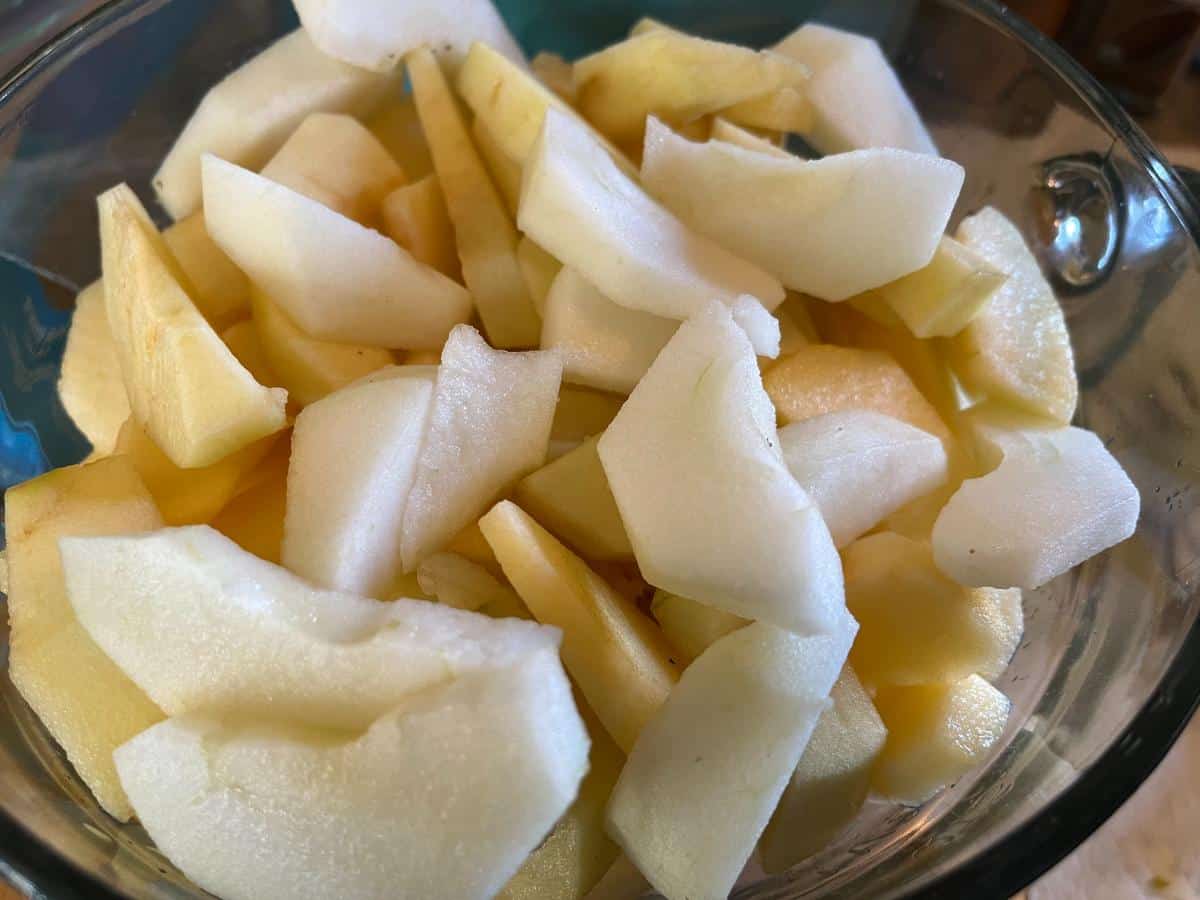
- Place in a large, non-reactive pan (like stainless steel or enamel coated) with a heavy bottom
- Add water to about ½ to ¾ of the depth of the apples
- Cover the pot and cook the apples at a simmer until they are soft and mashable
- Use a hand masher, immersion blender, food mill, sieve, or blender and mash the sauce down into applesauce
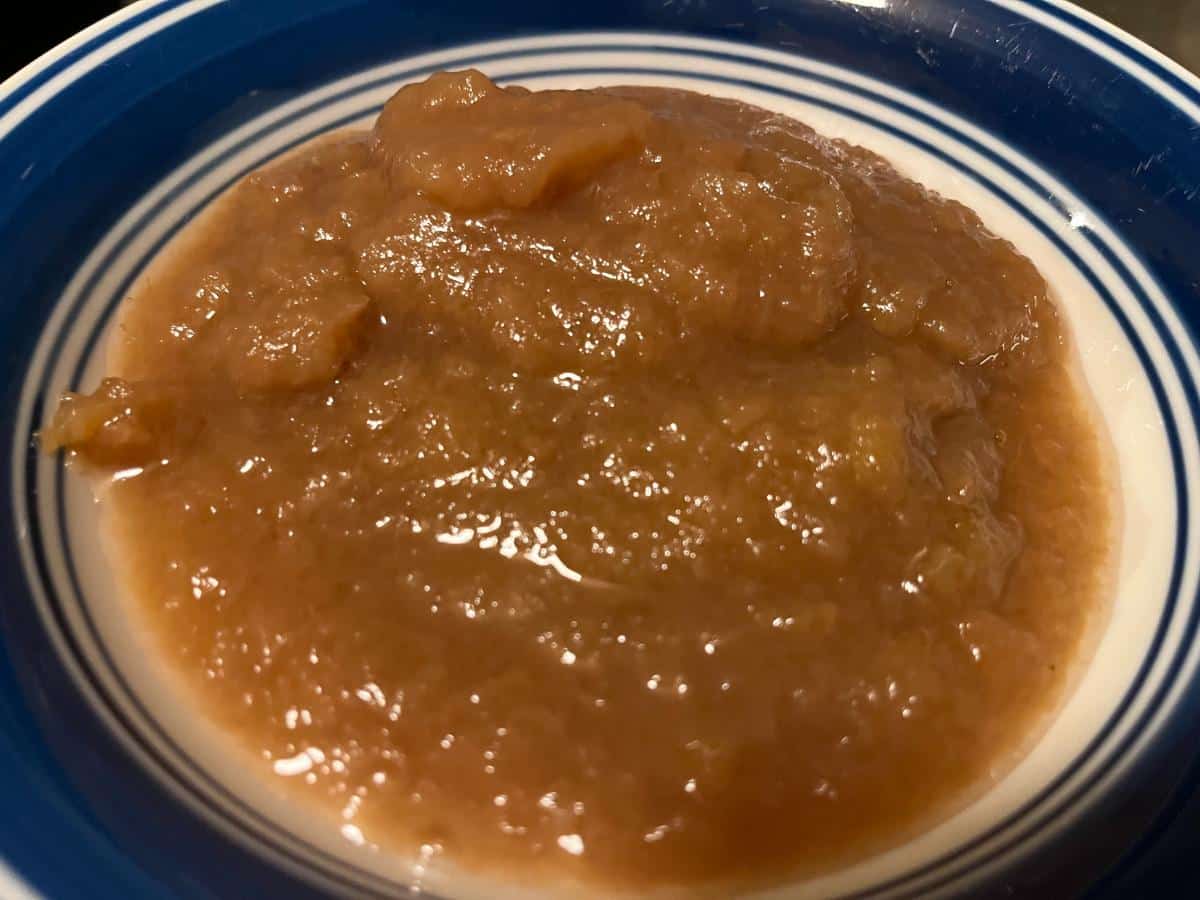
- You can leave the sauce chunky if you like or blend it into a fine, smooth sauce
- If the sauce seems too thin, remove the cover and simmer on low, stirring occasionally, until the applesauce is the consistency you prefer
- Taste the applesauce
- Often, it will not need any sweetening, but that will depend on your palate and the sweetness of the apples
- Add sugar to taste if desired (again, this is not necessary if you like the flavor)
- That’s it! Making clean, healthy, delicious homemade applesauce really is that easy!
For sweeter applesauce:
If you like a sweeter sauce, add sugar gradually and taste as you go. You can always add more, but you can’t undo it if you’ve added too much sugar! (Although you could cook more sauce and add more unsweetened sauce to the batch to even it out, so you actually can.)
If you want to sweeten the sauce, start by adding about ¼ cup of sugar for every 4 apples or about 3 tablespoons of sugar to every pound of apples you use.
For a deeper flavor, you can use brown sugar in place of the white sugar.
For spiced applesauce:
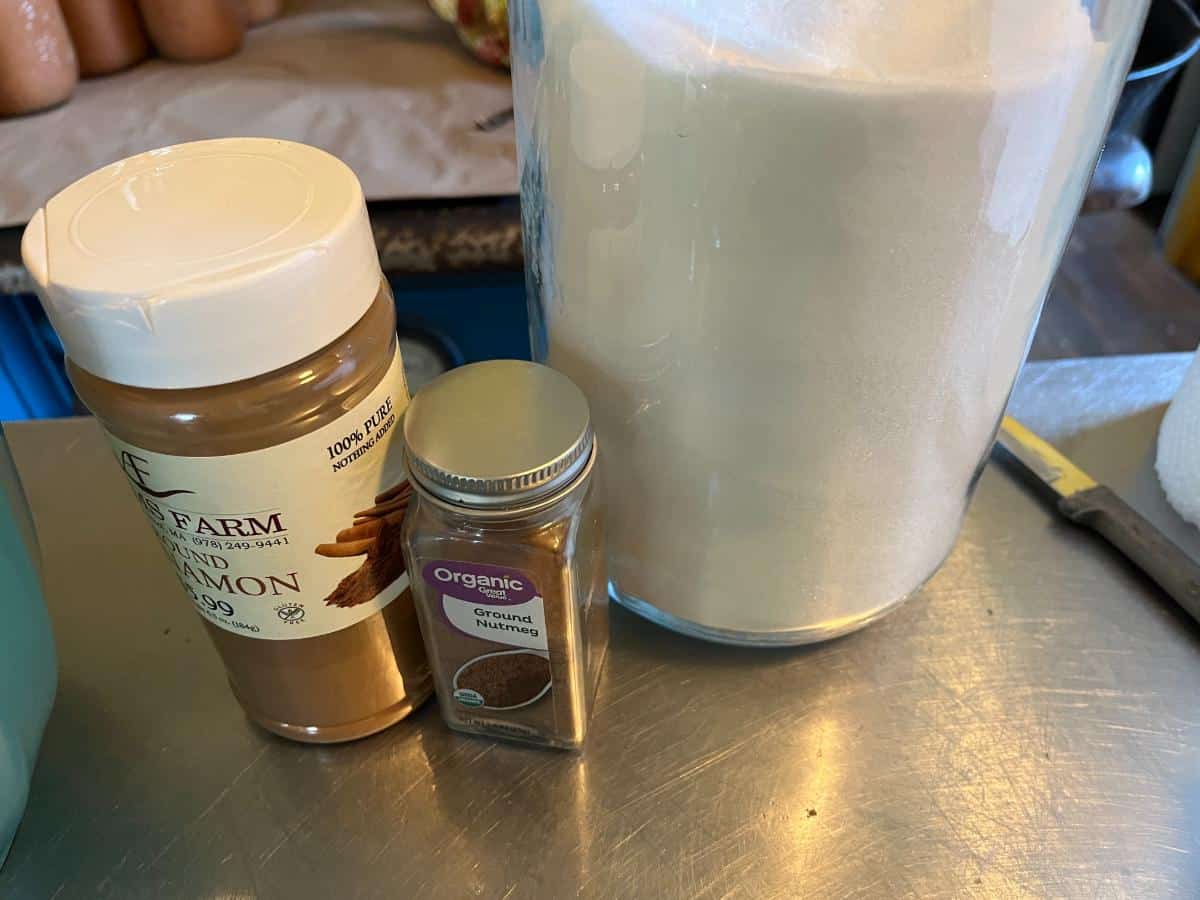
If you like spiced apple sauce, you can add some cinnamon to your sauce. You might like a little allspice or nutmeg, too, but add it sparingly -- these spices can quickly overpower.
For spiced applesauce:
- Start with 2 teaspoons of cinnamon for every 5 pounds of apples used
- Optional nutmeg or allspice: add ¼ teaspoon to 5 pounds of cooked apples
- Taste, then add more to taste if desired
Storing Your Homemade Applesauce
There are two good ways to store applesauce as sauce and a third option if you want to make it into a different edible product:
- Can or canning (aka jarring in many countries)
- Freeze
- Dehydrate
To can (or jar) your applesauce:

Applesauce only needs canning in a water bath canner, which is the simplest of canning methods and could even be done in a large pot if you don’t have an actual “canner”.
You can can (or “jar”) the applesauce in pint or quart sized jars. Choose whichever is most convenient for your serving needs. You could even do some of each if you want some large jars and some smaller jars.
To can your homemade applesauce:
- Heat the applesauce to boiling
- Prepare your canner and jars, lids, and rings
- Fill the jars (you can use quarts, pints, or smaller individual serving-sized jars)
- Leave ½ inch headspace
- Run a skewer along the outer edge inside the jar to remove air bubbles
- Wipe rims
- Adjust caps and apply the rings until they are finger tight
- Process in a boiling water bath canner for 20 minutes (with water one to two inches over the tops of the lids)
- Remove from the canner using canning tongs
- Cover with towels and let sit, cool, and seal for 24 hours
- Your applesauce is now ready to store or to use!
To freeze your applesauce:
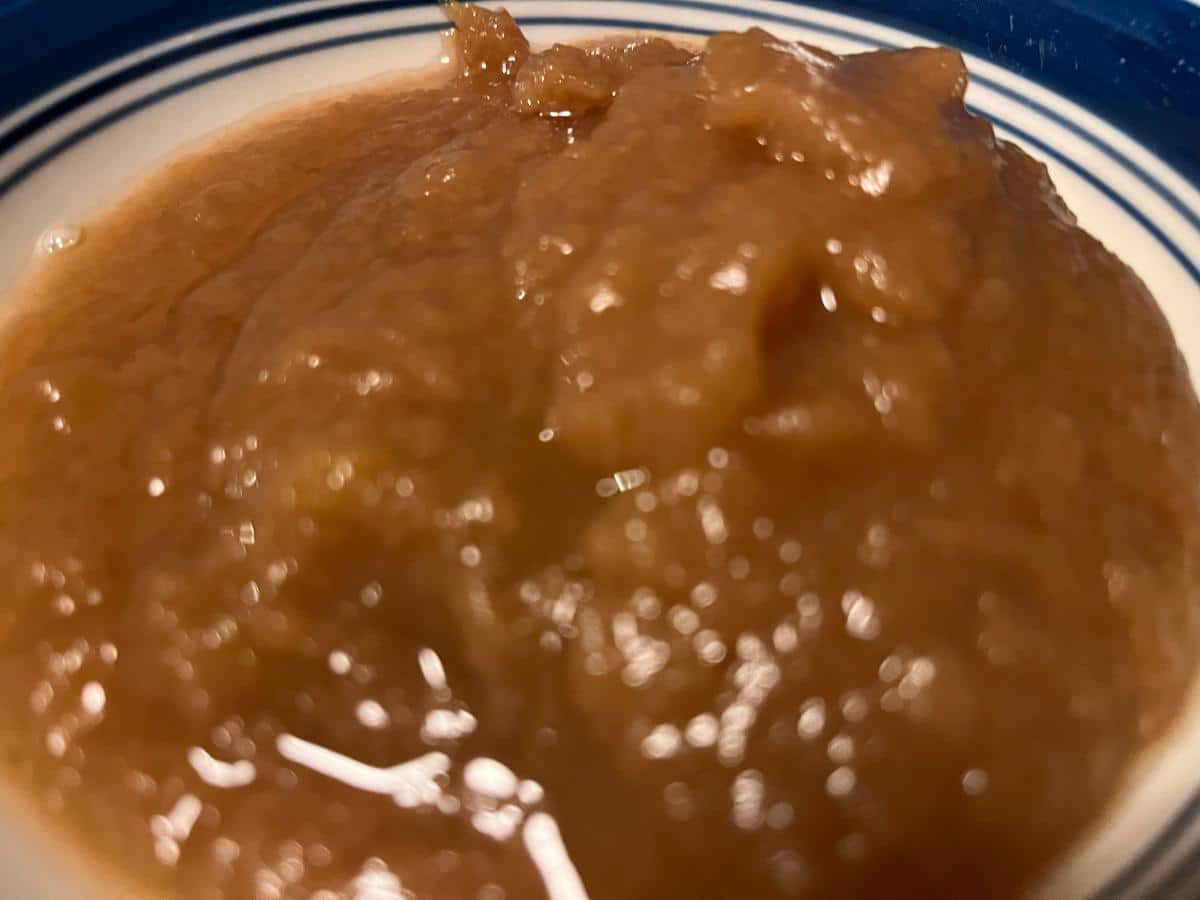
Freezing applesauce is simple:
- If using containers, make sure they are safe for use in the freezer (see options below).
- Let the applesauce cool to near room temperature or a little warmer. Or, you can refrigerate overnight and container the sauce for freezing the next day.
- When you fill your containers, leave one inch of headspace for the sauce to expand.
- When you want to use your applesauce, just thaw, serve, and enjoy! Or heat it up if you like it warm.
You do have to choose freezer-appropriate containers so they don’t break in the freezer. Some good options are:
- Reusable plastic deli containers (available in pint, half pint, and quart sizes)
- Reusable plastic freezer containers
- Canning jars, but they MUST be wide mouth jars; regular mouth jars are not freezer safe, even in large sizes, because they will break with the expansion and pressure at the neck
- Zipper-style freezer bags (like Ziploc™ brand ); there are reusable versions, too! Bags can be a real space-saving option
To dehydrate applesauce into fruit leather:
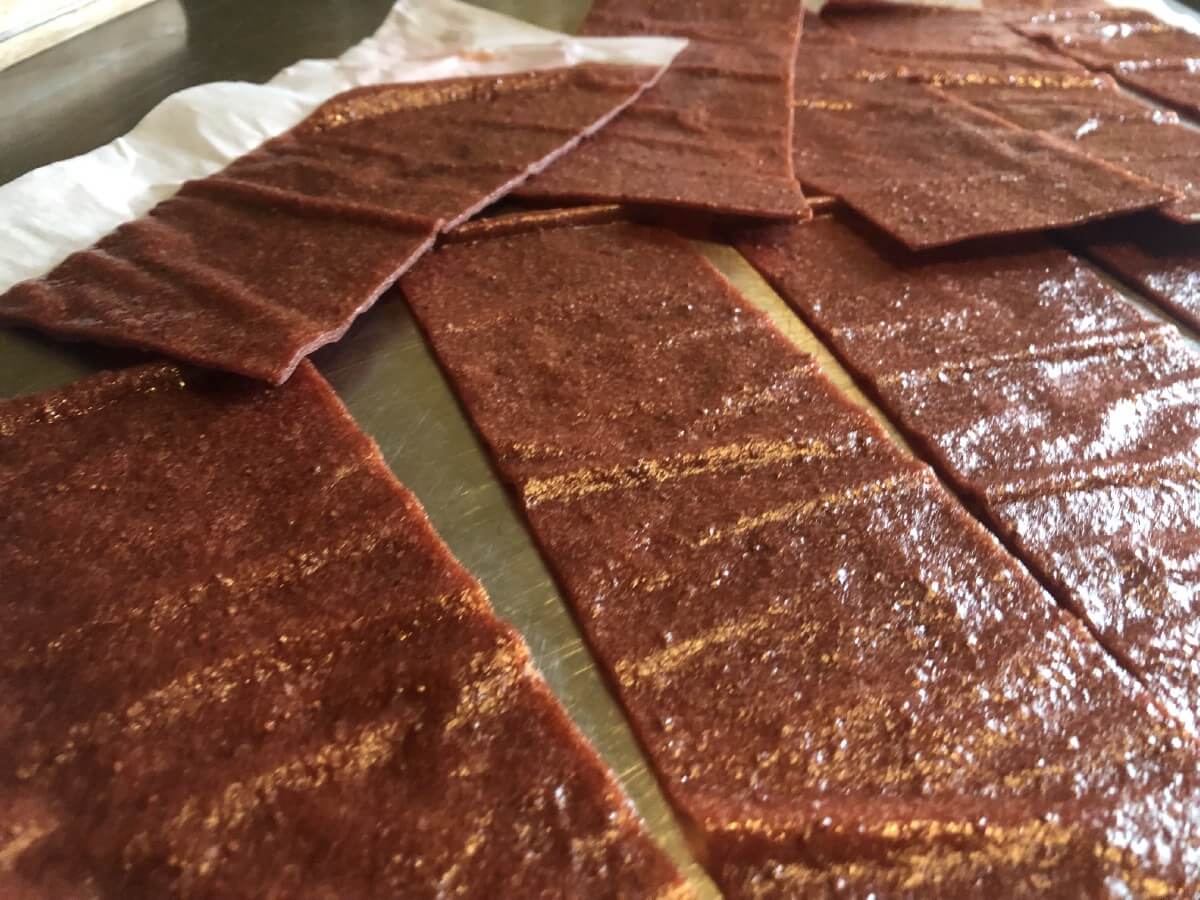
After it is made, you can dehydrate applesauce and it will turn into fruit leather (like fruit roll types of snacks).
- If you left your applesauce chunky, puree it until it is smooth; use a blender or immersion blender
- Cover your dehydrator trays with parchment paper, silicone sheets, or a sold tray liner
- Spread the applesauce over the surface, with no holes or spaces
- The layer should be about ⅛ inch thick in the center and ¼ inch thick at the edges (because the edges will dry faster than the middle)
- Dehydrate at 135℉ (57.2℃) until dry and pliable
- Drying will typically take between 8 and 12 hours
- Turn the trays every few hours and check for doneness
- Fruit leather should not be sticky or moist when finished, but also should not be dry and crispy
- Remove the sheet of fruit leather from the tray and cut it into serving-size sheets (roll them up if you like)
- Store in an airtight jar or container
You can also mix the applesauce with other pureed fruits like strawberries, cherries, blueberries and more. Applesauce is a good base ingredient for fruit leathers when the fruit itself does not stay pliable enough for fruit leather.
Other Ways to Use Homemade Applesauce
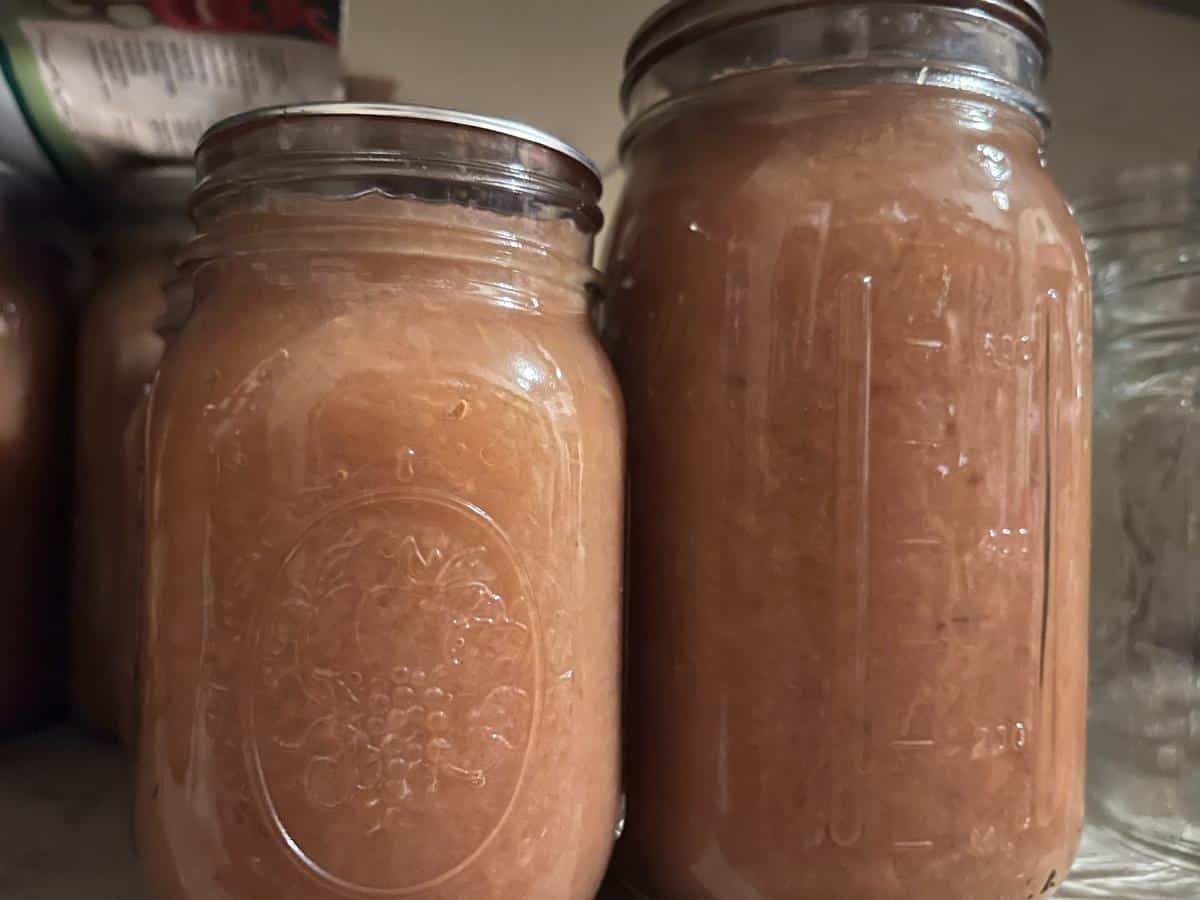
Applesauce is delicious when eaten as a snack or side dish. It is also excellent to use in baking and makes a healthy replacement for oil or butter in baking.
Or, try it warm over vanilla ice cream!
Average Apple Yields (Pounds of Apples Into Sauce)
Here are some average estimates for how many pounds of apples you will need for making a certain amount of sauce.
Note that yields will vary depending on the type of apple, how moist or dry they are, and how thick you want your applesauce to be when it is cooked down.
On average, this is how many apples you will need (in pounds) for different amounts of applesauce:
- The average yield is this: One pound of sauced apples yields one pint of applesauce
- 5 pounds of apples nets about 5 pints of sauce
- There are typically 5 to 6 pounds of apples in a half peck
- For large batch preserving, plan on one bushel of apples to make 15 to 20 quarts of sauce
- There are two pints in a quart
Buying Tips for Sauce Apples
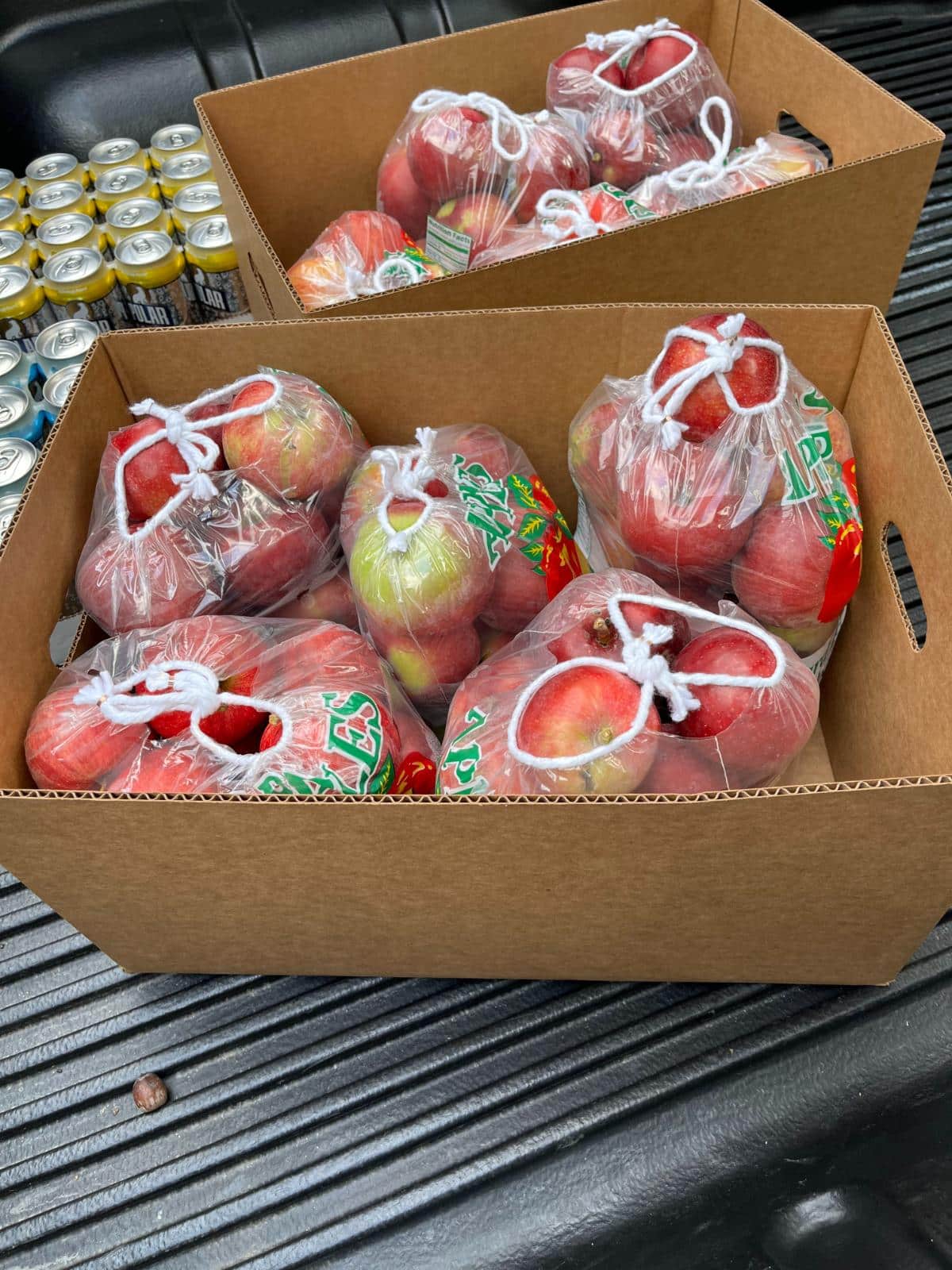
Applesauce can often be one of the most affordable preserved foods to make. Many of us have access to large bulk buys of apples when they are in season.
Of course, if you grow your own, that’s even better and cheaper! Free!
To get the best price on apples, here are some suggestions:
- Buy during harvest season
- Find an orchard or farmer that sells “Seconds”
- Seconds may be slightly bruised, blemished, or soft; they may be small or undersized or may have a small nick in the skin
- Often, orchard-fresh seconds will be as good as apples that you find in a grocery store
- It’s fine if the apples have a little bruising or broken skin; if necessary, just cut that away
- Seconds are often sold at a significant discount
- Pick your own apples are usually cheaper than those that are already picked
- You can also ask the orchard if they allow people to pick up “drops” (apples that have fallen and dropped off the tree)
- Drops are often sold at a discount, and orchards are usually glad to have people help clean them up, which helps them to control insects, rodents, and pests in the orchard
- If orchards offer gleaning near you, you may get very cheap or free apples (usually drops or remnants on the trees at the end of the harvest)

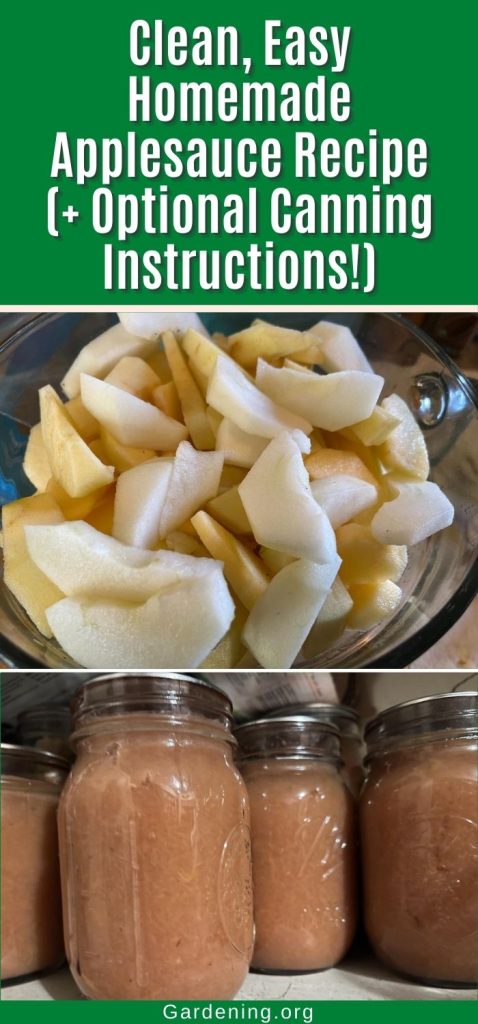
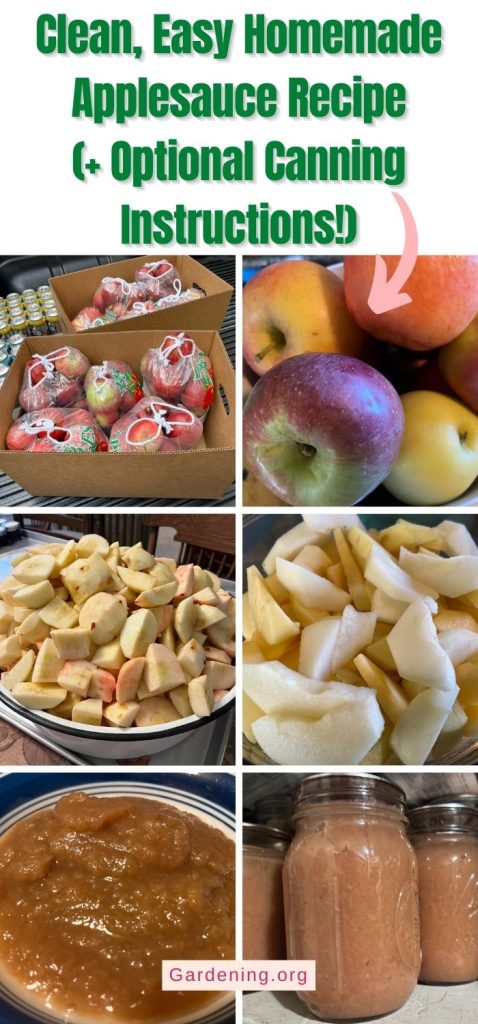
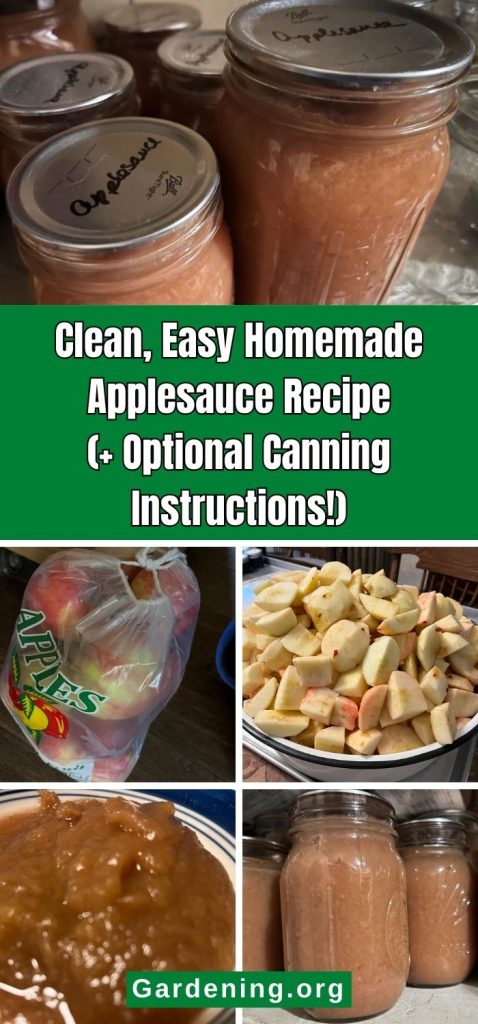
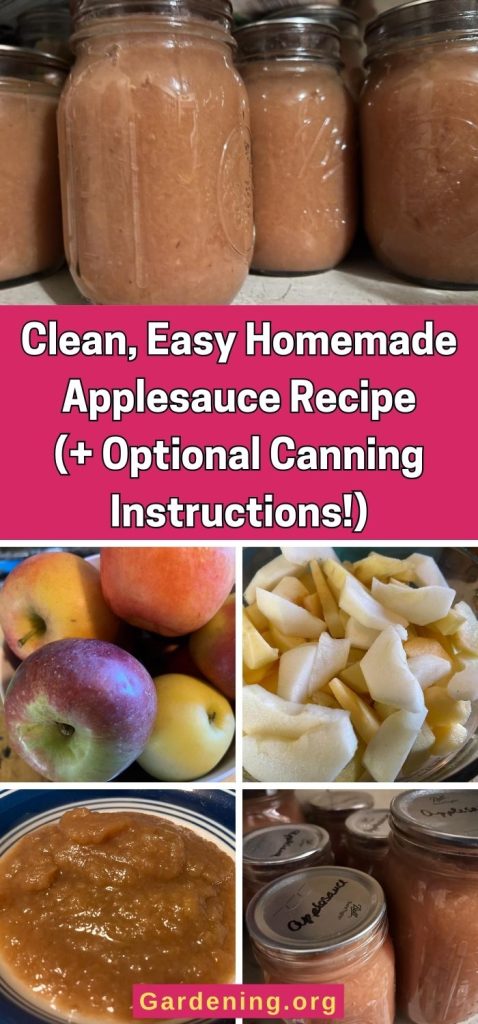



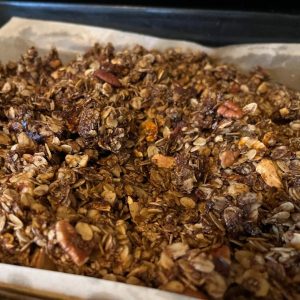
Leave a Reply